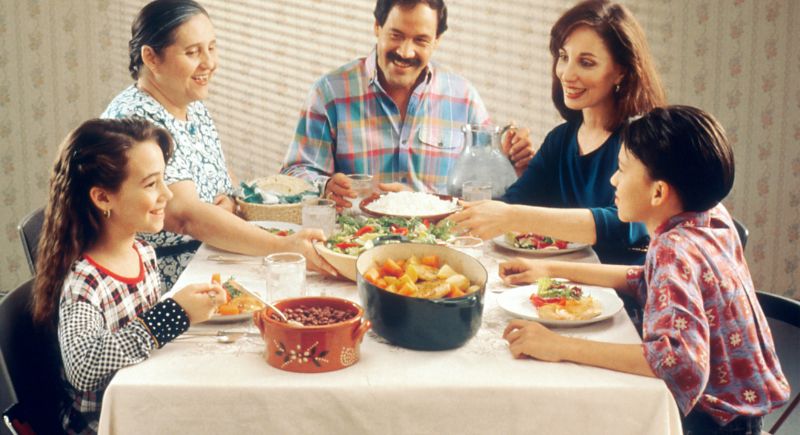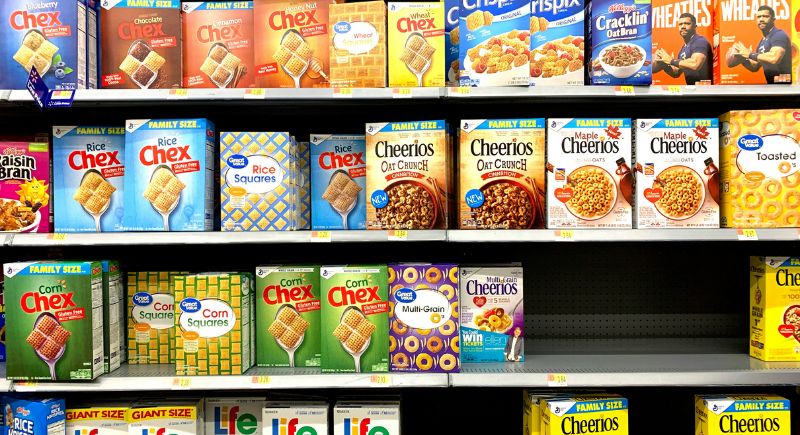How Breakfast Became “The Most Important Meal of the Day”
There’s a phrase that gets tossed around like salt on hash browns: “Breakfast is the most important meal of the day.” It’s been repeated in school cafeterias, commercials, kitchen tables, and doctor’s offices for over a century. It sounds like it was handed down by ancient philosophers or written in a medical textbook. But the real story behind that slogan has more to do with cereal boxes and bacon ads than it does with timeless wisdom or nutritional breakthroughs.
How Work Changed the Meal

Image via FreePik/pch.vector
The modern breakfast routine of cereal, bacon, and orange juice didn’t fall into place because it was the healthiest or most balanced option. It was shaped by a mix of industrial shifts, religious reformers, and corporate marketing campaigns that knew how to tap into fears and habits. The idea that breakfast needed to be a specific kind of meal at a specific time with specific foods didn’t really take hold until factories, public school bells, and advertising executives gave it structure.
In the late 1800s, breakfast wasn’t a highly regulated ritual. People often ate leftovers or bread. Heavier meals were common in farming communities where manual labor filled the day. But once people began working in factories and offices, that kind of breakfast stopped making sense. Sitting all day didn’t pair well with a plate full of ham and biscuits. Indigestion became a regular complaint. That opened the door for new solutions and products.
The Birth of Cereal and the Moral Breakfast

Image via Unsplash/Thought Catalog
At the same time, certain groups were trying to reform American eating habits. Health crusaders with strong religious ties argued that bland, plant-based meals would cure everything from indigestion to moral corruption. One of them was Dr. John Harvey Kellogg, a Seventh-day Adventist who ran a health sanitarium in Michigan. He believed spicy or rich foods stirred up sinful urges, so he promoted a simple, grain-based diet, and cornflakes were born. They were meant to calm the body and soul, not “sinfully” excite the taste buds.
His brother, W.K. Kellogg (you can see where this is going), saw a business opportunity. While John focused on wellness, he focused on mass production and marketing. He sweetened the flakes and slapped them into boxes, launching one of the most successful food brands in American history. Soon, others joined, and breakfast cereals lined store shelves.
Meanwhile, meat producers had their own problems.
Bacon’s Marketing Revival

Image via Unsplash/James Kern
In the 1920s, lighter breakfasts were trending. Toast and fruit had taken priority while bacon sales were slumping. Then came Edward Bernays, the public relations mastermind with a knack for making the improbable seem necessary. While working for the Beech-Nut Packing Company, he came up with a campaign to revive bacon’s popularity.
He got a physician to sign off on a protein-rich breakfast being “healthier,” and then sent that statement to thousands of other doctors. Most signed it. Newspapers ran the story as if it were groundbreaking science.
The campaign worked. Bacon and eggs made a comeback that seemed scientifically fueled, but this was strictly savvy PR. The idea that breakfast should be hearty and warm never fully went away. Instead, this meat campaign merged with cereal’s convenience and sugary appeal.
Selling the Full Spread

Image via Unsplash/rishi
By the 1940s, cereals were being fortified with vitamins. Orange juice, once an occasional treat, became part of the package, promoted as a necessary source of vitamin C. Families were busy, and advertisers leaned hard on guilt marketing. Mothers, in particular, were told that feeding their children a proper breakfast was an act of care, love, and responsibility. With more women entering the workforce during World War II, breakfast had to be fast and fuss-free, and cold cereal fit that need perfectly.
As time passed, the idea of breakfast being non-negotiable kept gaining traction. School nutrition programs started emphasizing it, and cafeterias began serving standardized morning meals. But by the time slogans like “the most important meal of the day” were echoing through kitchens and classrooms, the phrase had already been circulating in ads and campaigns for decades.
Science, Habit, and Mood

Image via Unsplash/National Cancer Institute
That doesn’t mean breakfast is meaningless. Some research points to benefits, like improved concentration in kids who eat in the morning, especially when their home diets are inconsistent or low in nutrients. But the evidence is far more mixed for adults. Some people feel better when they eat early, while others follow intermittent fasting schedules without any trouble. In any case, hunger, mood, and energy levels vary widely.
Breakfast Is Changing Again

Image via Unsplash/Franki Chamaki
Still, the foods themselves have shifted. Sugary cereals have lost some shine since sales have dipped. Orange juice, once a breakfast staple, has seen a steady decline, too. People are choosing protein bars, smoothies, or skipping the meal altogether. Cafés and fast food chains now offer breakfast items well into the afternoon, and some restaurants build full menus around waffles and egg sandwiches. Breakfast is no longer confined to one slot on the clock.
Cereal companies have responded by tapping into childhood memories. Bright boxes with cartoon mascots still fill the shelves, but now they sit next to gluten-free granola, oat milk options, and protein-packed blends. Some chefs have started experimenting with breakfast foods in unexpected ways, using cereal in savory dishes or turning leftover dinner into hash. And while not everyone wants to eat a fried egg at 10 p.m., more people are starting to question why breakfast should follow a rulebook at all.
Let It Be Your Meal

Image via FreePik
That’s the part worth remembering. The idea that breakfast must look a certain way or be eaten at a set hour came from changing work schedules, religious reformers, and smart marketers. It wasn’t written in stone. It was printed on packaging and repeated often enough to feel like a universal truth. But food habits are flexible. They follow people, not the other way around.
You can call a reheated taco a breakfast taco. You can warm up last night’s soup and top it with an egg. You can make breakfast cold, hot, small, or skip it altogether. What matters is that it works for the person eating it. Or not eating it.